Stirling is no stranger to your typical visitor to Scotland. After all, the place practically reeks of Scottish history. Two of our most significant battles, led by two of our most notable heroes took place here. And you would be hard pressed to find a Scottish monarch that hasn’t set up camp here at some point. With all those fabulous tales it’s no surprise that people make a point of visiting Scotland’s ancient capital.
For many though, Stirling is only a day trip, if not less. Often a stop off on one of the day tours north from the capital, most visitors will stop off at Stirling Castle or take the brisk walk to the top of the imposing Gothic structure that is The National Wallace Monument. Now don’t get me wrong, both sites are well worth visiting – the interior of Stirling Castle has been restored to its colourful, mid-16th century glory and the views from the Wallace Monument are stunning – but stick around a bit longer and there is plenty more to discover.
Stirling may lack the aesthetics of Edinburgh or the metropolitan buzz of Glasgow, but whether you want to avoid the big cities or simply wish to see a different side of Scotland, there is enough here and in the surrounding area to keep you entertained for a few days.
Location and Price
I just briefly want to mention two of the advantages of basing yourself in Stirling for even part of your time in Scotland: location and price.
Stirling is renowned as the ‘Gateway to the Highlands’. The flat, now arable plains most of the city is surrounded by suddenly burst into a tidal wave of hills on the horizon, making it clear how the city got its nickname. This makes it a great stomping ground for exploring further afield in Scotland’s beautiful north. Not only that but you place yourself almost equidistant from Scotland’s two largest cities. Edinburgh is no more than an hour away by train, and Glasgow only forty minutes or so. And with Loch Lomond only a stone’s throw away you’ve got yourself an almost perfectly placed city.
What’s more is the money you will save here. The city of Stirling is easier on the wallet than its larger cousins. Taxis, drinks, food, entrance fees – pretty much everything is cheaper here. But, what, I hear you ask, are you going to spend all this leftover money on….? Well, read on for some inspirtation…
Battle of Bannockburn Visitor Centre
Think battlefield visitor centre and you probably imagine a barren field with the odd bit of signage detailing the events that took place there however many years ago. You might get an audio guide if you’re lucky.
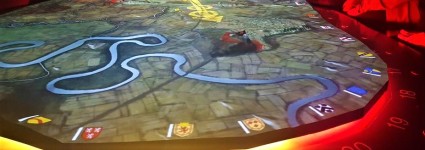
Things are a little bit different at the Battle of Bannockburn Visitor Centre. For starters, it is unlikely that the battle, which helped to secure Scotland’s Independence from the English during the First Scottish Wars of Independence in the early 1300s, even took place on the site of the visitor centre (the exact location is still contested by historians). Secondly you will spend the majority of your experience fighting it off with your fellow visitors in a virtual reenactment of the battle. You will be randomly assigned to either the English or Scottish side and will help to lead your side to victory in this 3D game.
For some it might be a bit gimmicky, but personally I think it’s a great way to keep the battle alive and interesting. Plus, you know, it’s just good fun – the only way I could possibly enjoy this more is if I was ten again! Generally speaking, the guides are hilarious. They are hugely knowledgeable about the battle and Scottish history in general and will be more than willing to answer any questions.
The centre is located just south of the city centre and is easily accessible by bus if you don’t have a car. Buses 57, B1, W1 and X39 all go here from the bus station(make sure to ask for the Bannockburn visitor centre otherwise you might get dropped off in the village of Bannockburn which is some while away).
Top of the Toon
Stirling’s Old Town, or the Top of the Toon as it is affectionately known to the locals is 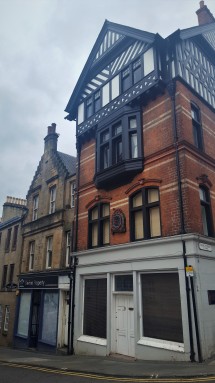 where most of Stirling’s architectural gems are to be found. A hotch potch of 15th and 16th century buildings, this place is a bit of a photographer’s paradise. It is often devoid of many people and can feel a bit like stepping back in time. Mar’s Wark is one of my favourite buildings in the area, although only the facade remains, the rest having crumbled over time.
where most of Stirling’s architectural gems are to be found. A hotch potch of 15th and 16th century buildings, this place is a bit of a photographer’s paradise. It is often devoid of many people and can feel a bit like stepping back in time. Mar’s Wark is one of my favourite buildings in the area, although only the facade remains, the rest having crumbled over time.
The Church of the Holy Rude (‘rude’ meaning cross in Scots) sits not far from the castle. It is the only surviving church in the United Kingdom besides Westminster Abbey to have held a coronation, having been the site of James VI of Scotland and I of England’s coronation. The ‘kirkyard’ or graveyard surrounding the church is well worth exploring, with a selection of intricate graves and other masonry. One of the most notable bits of stonework is the Star Pyramid, monument to Martyrs from the Reformation and said to contain the body of a local eccentric. You can explore the city walls by following the Back Walk to Gowan Hill where you will find the Beheading Stone (three guesses what happened here). Besides that there is also the Stirling Ghost Walk which runs every Friday and Saturday.
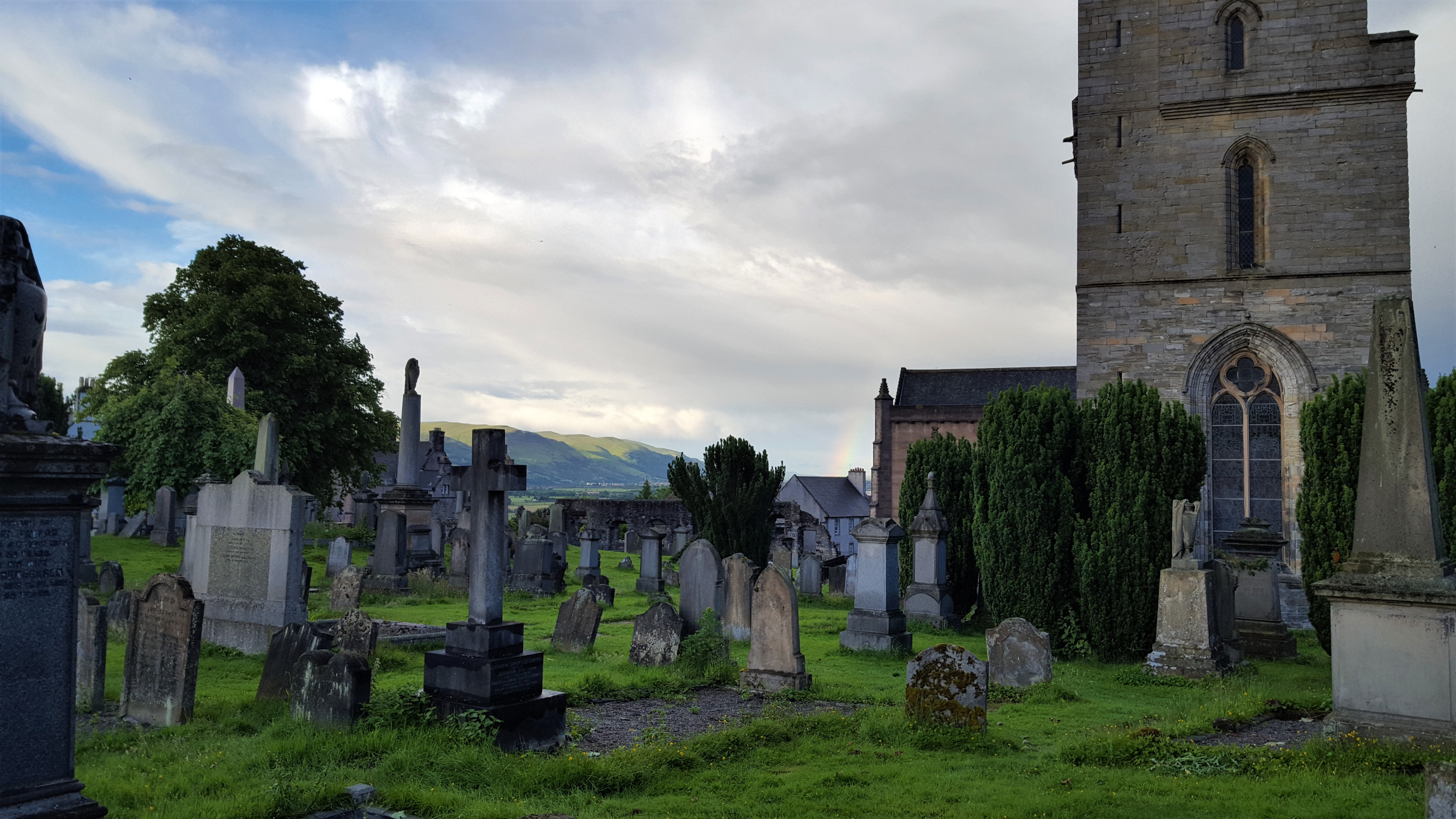
University of Stirling campus and the Macrobert Art Centre
Located about two miles north of the city centre is the University of Stirling campus. Whilst the buildings themselves might be a little bit 60s, the grounds are expansive and well worth a walk around. Covered in lush verdant grass and centred around a steely, presumably freezing loch, the former Airthrey Castle Estate was a gift to the university for them to build their campus on. You can still find Airthrey Castle on the grounds, with the Wallace Monument brooding over the campus on one side and the Ochil Foothills circling the other.
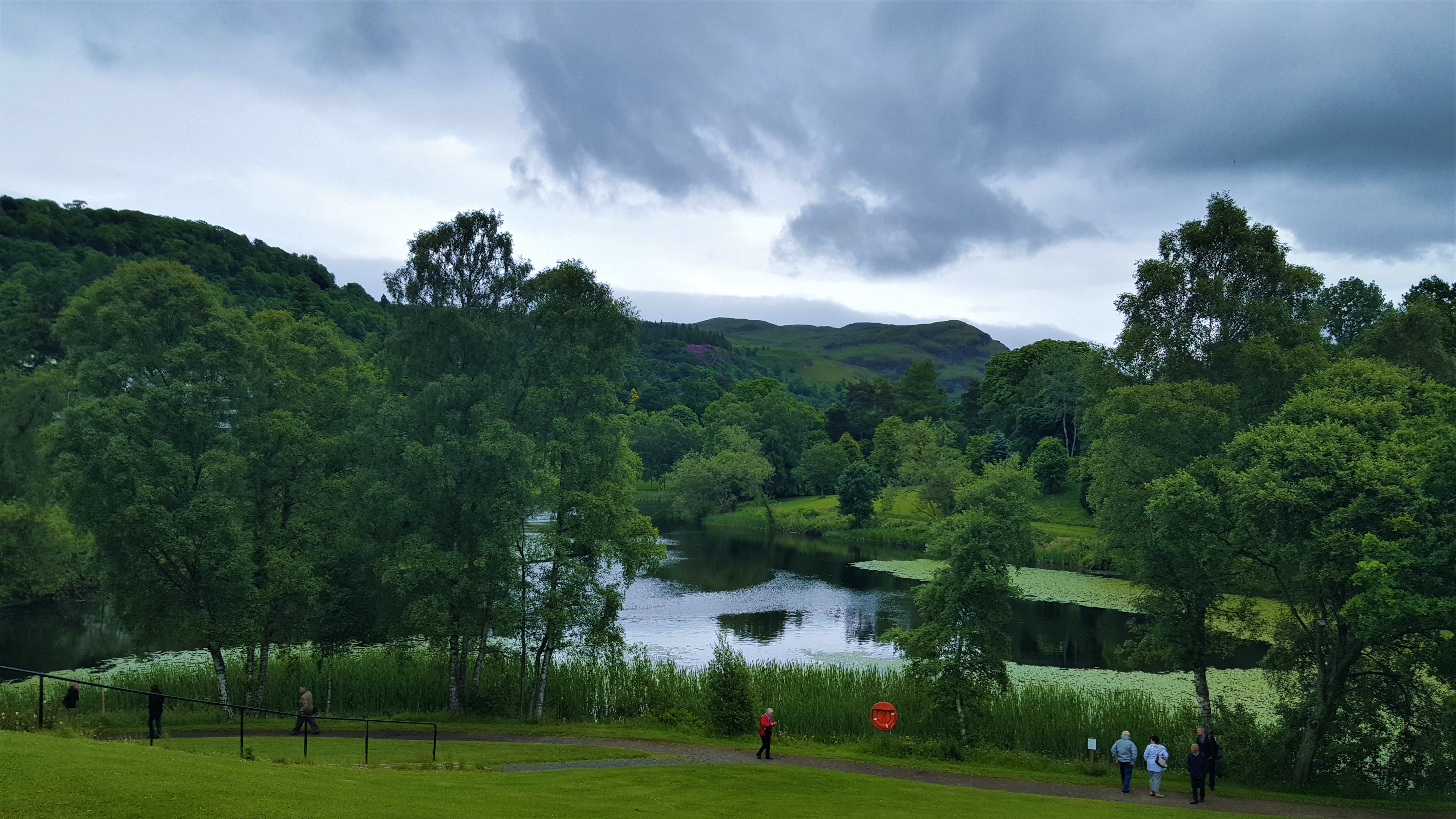
Also on campus is the Macrobert Arts Centre, a performing arts venue with a theatre and a cinema. They have a lively programme of events which you can find on their website along with a restaurant and cafe. As mentioned before Stirling tends to be cheaper than Glasgow or Edinburgh, and a lot of touring shows make their way to Stirling with tickets just a fraction of the price of those found in the larger cities. You can also check out the Tolbooth in the city centre for more theatre and live music performances.
Allanwater Brewhouse
Even amongst fellow Scots and beer fanatics that I know, the Allanwater Brewhouse is a little known pub in Bridge of Allan, home to the Tinpot Brewery. Bridge of Allan is a former Victorian spa town (as a poorly child, author Robert Louis Stevenson supposedly spent his summers here, bathing in the waters hoping they would cure his ailments) located adjacent to Stirling and the university campus. The village itself is quaint with lots of little one story buildings featuring typical Victorian style shop canopies on the street, something found in many of these former spa towns.
You can come to the Allanwater Brewhouse simply to enjoy a drink – they only sell their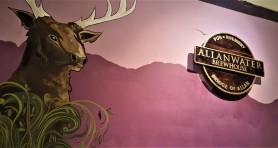 own beer and you will be hard pressed to find this stuff elsewhere. Or, if you want to find out more (and to get your money’s worth in terms of alcohol !) you can check out one of their tours. Tours start at £12 and this will get you about eight tastings (each equivalent to around a third of a pint…) PLUS a full pint of a beer or cider of your choice at the end. The guides, who are attentive and more than willing to answer any questions, will give you an in-depth account of the brewing process at Scotland’s smallest brewery. A definite highlight of the area!
own beer and you will be hard pressed to find this stuff elsewhere. Or, if you want to find out more (and to get your money’s worth in terms of alcohol !) you can check out one of their tours. Tours start at £12 and this will get you about eight tastings (each equivalent to around a third of a pint…) PLUS a full pint of a beer or cider of your choice at the end. The guides, who are attentive and more than willing to answer any questions, will give you an in-depth account of the brewing process at Scotland’s smallest brewery. A definite highlight of the area!
Doune Castle and Deanston Distillery
Not far from Stirling and once famed for its production of pistols is the village of Doune (one of the first pistols fired at the American Wars of Independence supposedly came from Doune). Described by a friend of mine as being like “the castle you drew as a child when you imagine what a castle was supposed to look like”, Doune Castle is worth checking out. There is something a little ominous about the place and something about a typical moody, grey Scottish day seems to pair well with it.
There are a few distilleries that are accessible from Stirling but the easiest to get to is Deanston which you can easily couple with a visit to the castle as it is within walking distance. Deanston is a light whisky with honey and caramel notes. It’s a good introduction to the spirit for any newbies but hopefully if you’ve got any sense then you will fall in love with the stuff whilst in Scotland!
You can catch bus 59 going to Callander from the bus station to Doune.
Walks
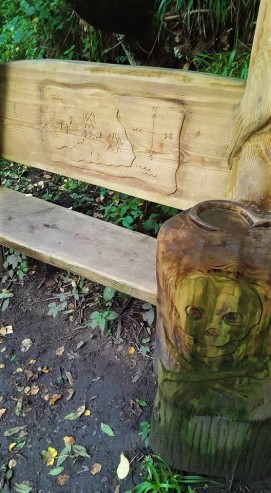
As I mentioned, Stirling is renowned as the Gateway to the Highlands, which makes it the ideal base for exploring the munroes and corbetts of Scotland’s Highlands. But even if you aren’t a serious walker or just need to walk off that whisky hangover, there are plenty of easier walks to get you out in nature in Stirling and around.
The Darn Walk connects Bridge of Allan to Dunblane. The walk only takes about an hour or so and follows a road that has supposedly been used since Roman times. En route you will find a cave which was supposedly Robert Louis Stevenson’s inspiration for Treasure Island, along with a carved bench marking the spot. Particularly popular with University of Stirling students and part of the Ochil hills, Dumyat is an easy hillwalk that will only take you a couple of hours. You can find out more information about both walks and about other walks in the area (or in fact any walk in Scotland – this site is a bit of a bible!) at walkhighlands.
Has anyone else been to Stirling? What did you think? Any recommendations of things to see and do in the city and the surrounding area?
Looking to visit some other less visited parts of Scotland? Then be sure to check out my article on the Fife and the Fife Coastal Tourist Route.